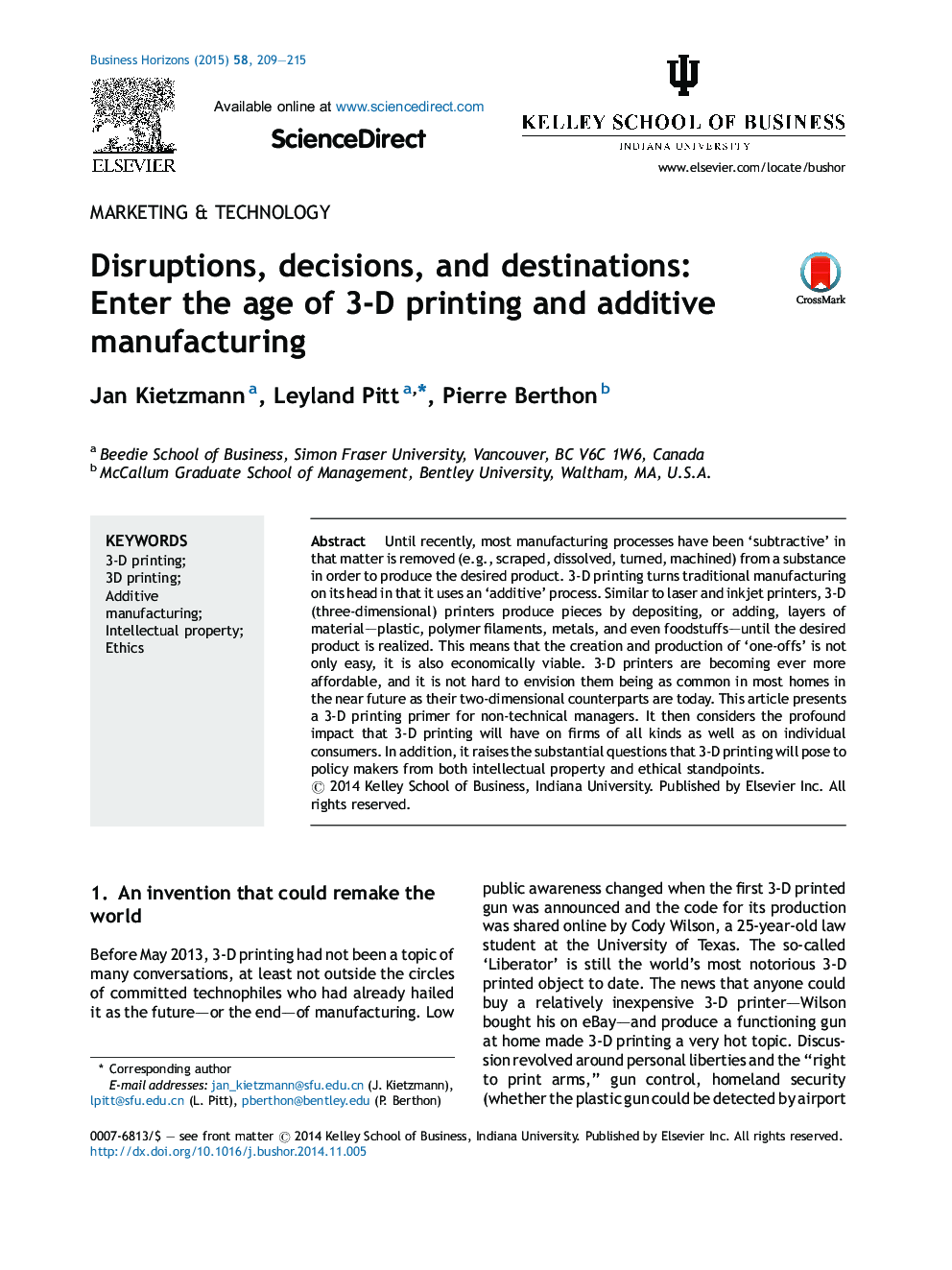| Article ID | Journal | Published Year | Pages | File Type |
|---|---|---|---|---|
| 1013910 | Business Horizons | 2015 | 7 Pages |
Until recently, most manufacturing processes have been ‘subtractive’ in that matter is removed (e.g., scraped, dissolved, turned, machined) from a substance in order to produce the desired product. 3-D printing turns traditional manufacturing on its head in that it uses an ‘additive’ process. Similar to laser and inkjet printers, 3-D (three-dimensional) printers produce pieces by depositing, or adding, layers of material—plastic, polymer filaments, metals, and even foodstuffs—until the desired product is realized. This means that the creation and production of ‘one-offs’ is not only easy, it is also economically viable. 3-D printers are becoming ever more affordable, and it is not hard to envision them being as common in most homes in the near future as their two-dimensional counterparts are today. This article presents a 3-D printing primer for non-technical managers. It then considers the profound impact that 3-D printing will have on firms of all kinds as well as on individual consumers. In addition, it raises the substantial questions that 3-D printing will pose to policy makers from both intellectual property and ethical standpoints.
